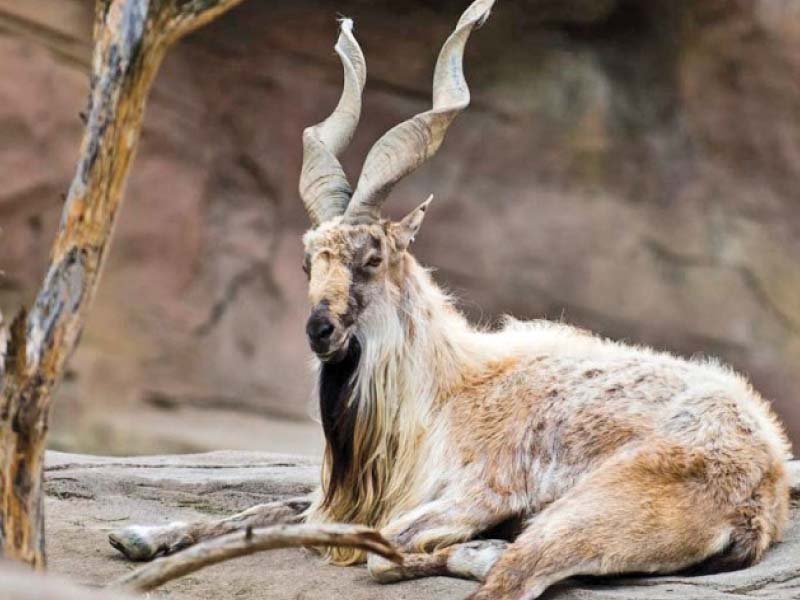
Asadullah Bazai, Pakistan’s former national shooting champion and a veteran hunter, is on a mission to save the country’s rare Sulaiman markhor, a straight-horned goat that was once on the verge of extinction due to extensive hunting and poaching.
Bazai, 55, and his team have devoted a great deal of time – and a good deal of money – to the preservation of the rare species in southwestern Balochistan province, which borders Iran and Afghanistan.
The Sulaiman markhor is a sub-species of the markhor – Pakistan’s national animal – and is endemic to Asia.
In Balochistan, the mountainous regions of Torghar and Takatu are the two major habitats of the animal, while it is also found in small numbers in the mountains and forests of Ziarat, Sherani and Zhob districts.
Bazai, a father of five, who has represented Pakistan in several international shooting events, gave up hunting and launched the mission to save the Sulaiman markhor in 2002.
His team, comprising several former amateur hunters and wildlife photographers, operates across Takatu Range, which is located in the northeast of the provincial capital Quetta and spans over 150 kilometers (93 miles).
In 2002, Bazai met with some Hungarian rifle shooters at a competition in Pakistan’s commercial capital Karachi who changed his mind about hunting animals.
“It was a life-changing moment that transformed me from a hunter to a conservator. One of them told me don’t shoot live animals with a rifle, shoot them with a camera,” he told Anadolu.
When he launched his campaign in 2002, there were only a few dozen Sulaiman markhors left in Takatu Range.
Current estimates, according to Bazai and other wildlife experts, put the animal’s population at around 2,000, while a 2023 survey by the Balochistan Wildlife Department placed the number in the Takatu Range at 1,400.
“We have involved local communities in our campaign and convinced them to not kill the animal, and also to stop hunters from doing that,” Bazai added.
In comparison to other species, the Sulaiman markhor lives in a clearer and drier climate at an altitude of between 7,500 and 9,000 feet (2,290 to 2,745 meters).
Years of concerted efforts, including greater community involvement and a sustainable trophy hunting program, have helped bring the animal’s population to the “stable” category.
A long-term project launched in the 1980s by Balochistan’s Forest Department in collaboration with a tribal chief and wildlife lover, Mir Naseer Khan, started yielding results in early 2000.
“When that project was launched, the total population of Sulaiman markhor was alarmingly low, just less than 100,” Tahir Rasheed, a Quetta-based wildlife expert, told Anadolu.
“It is the combined effort of the forest department and the tribal chief that eventually brought the animal out of danger and its population in the thousands,” added Rasheed, a former official with the World Wildlife Fund for Nature (WWF), who is currently serving as head of the Balochistan Rural Support Program. In the last survey conducted a decade ago, in which Rasheed himself participated, the population of Sulaiman markhor was recorded at over 3,000.
Current estimates suggest that their number is between 4,500 and 5,000, said Arz Mohammad, a conservator at the Balochistan Wildlife Department.
Speaking to Anadolu, he said international wildlife organizations still categorize the Sulaiman markhor as an endangered species, but considering the gradual and significant increase in its population over the years, it can now be classified as “stable.”



















COMMENTS
Comments are moderated and generally will be posted if they are on-topic and not abusive.
For more information, please see our Comments FAQ